Yes, I know it is relentless. That is also a feature of the polycrisis we are in. It comes from all sides and it just doesn’t stop.
How to get a handle on this situation?
In German there is a compound noun: Krisenbilder – Crisis Pictures. I am going to draw some Krisenbilder.

This one links the Russia-Ukraine-US war scare to financial pressure in Russia …
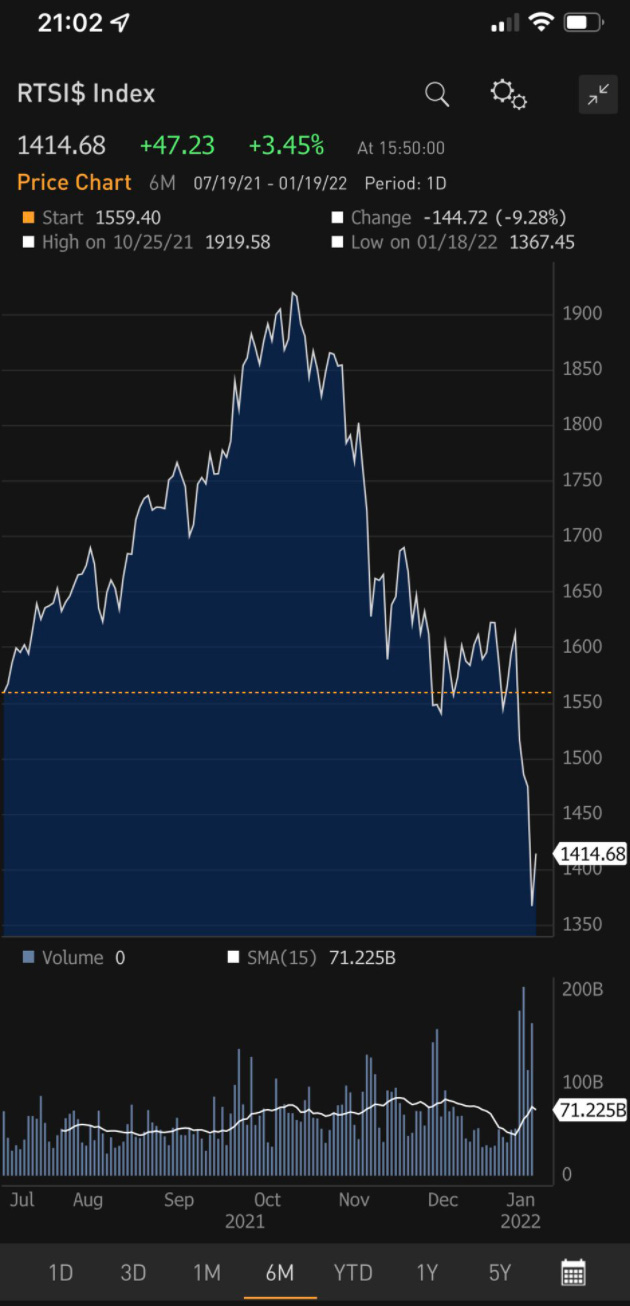
Source: Timothy Ash
and Ukraine where Credit Default Swaps (the cost of insuring government debt) are exploding…
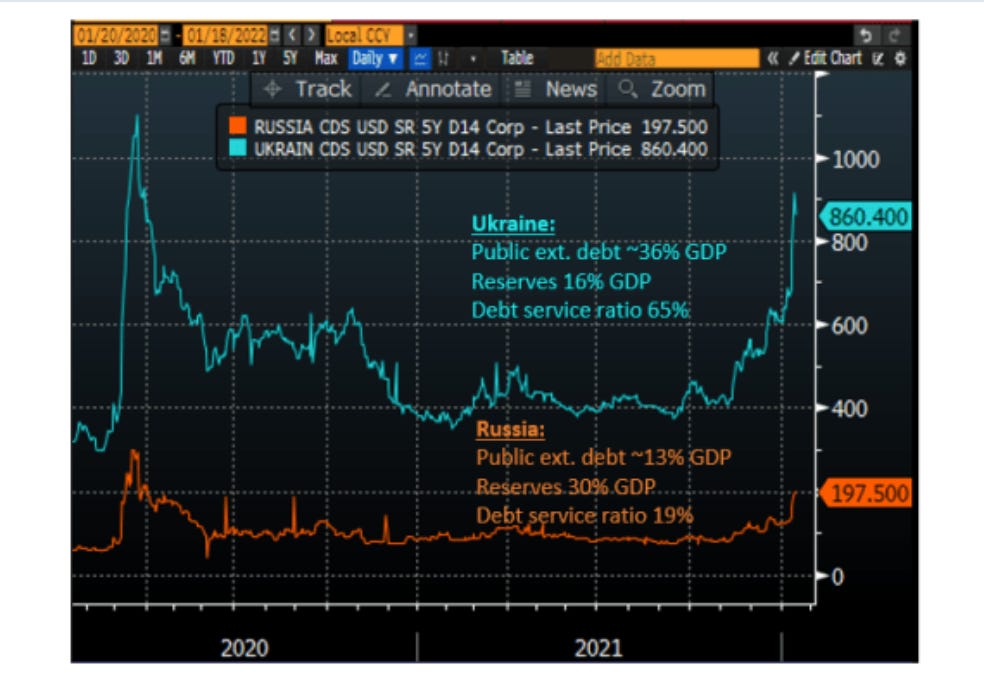
Could the West afford to sanction Russia? In 2014 US sanctions on Russia were carefully calibrated in light of the state of the oil market. How much more fragile is the situation today.
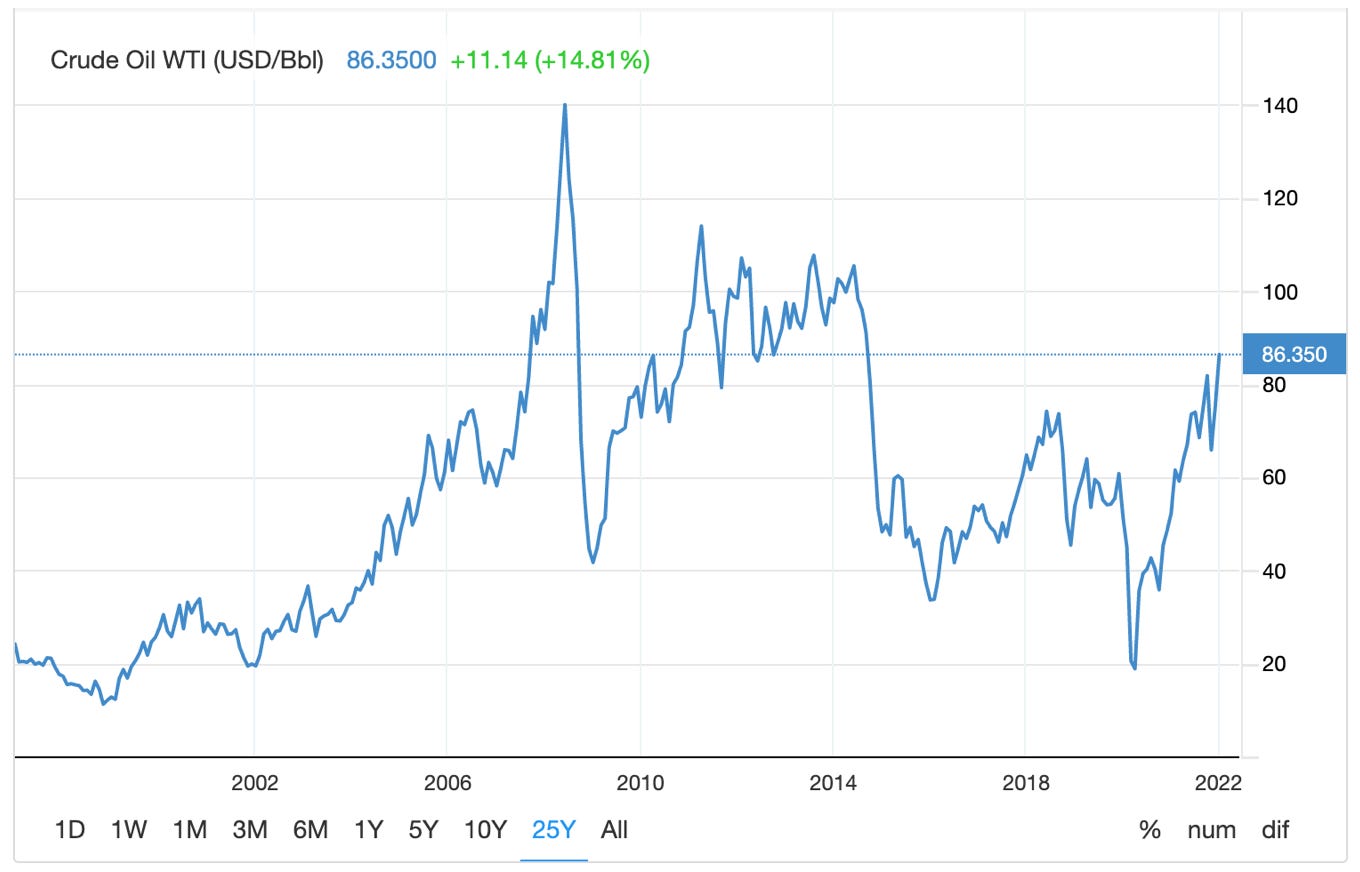
How vulnerable is the Biden administration given the inflation scare in the US and Europe. If there is one thing Europe does not need now, it is more pressure on gas prices. But Europe did nothing after 2014 to reduce its dependence on Russia for gas imports.
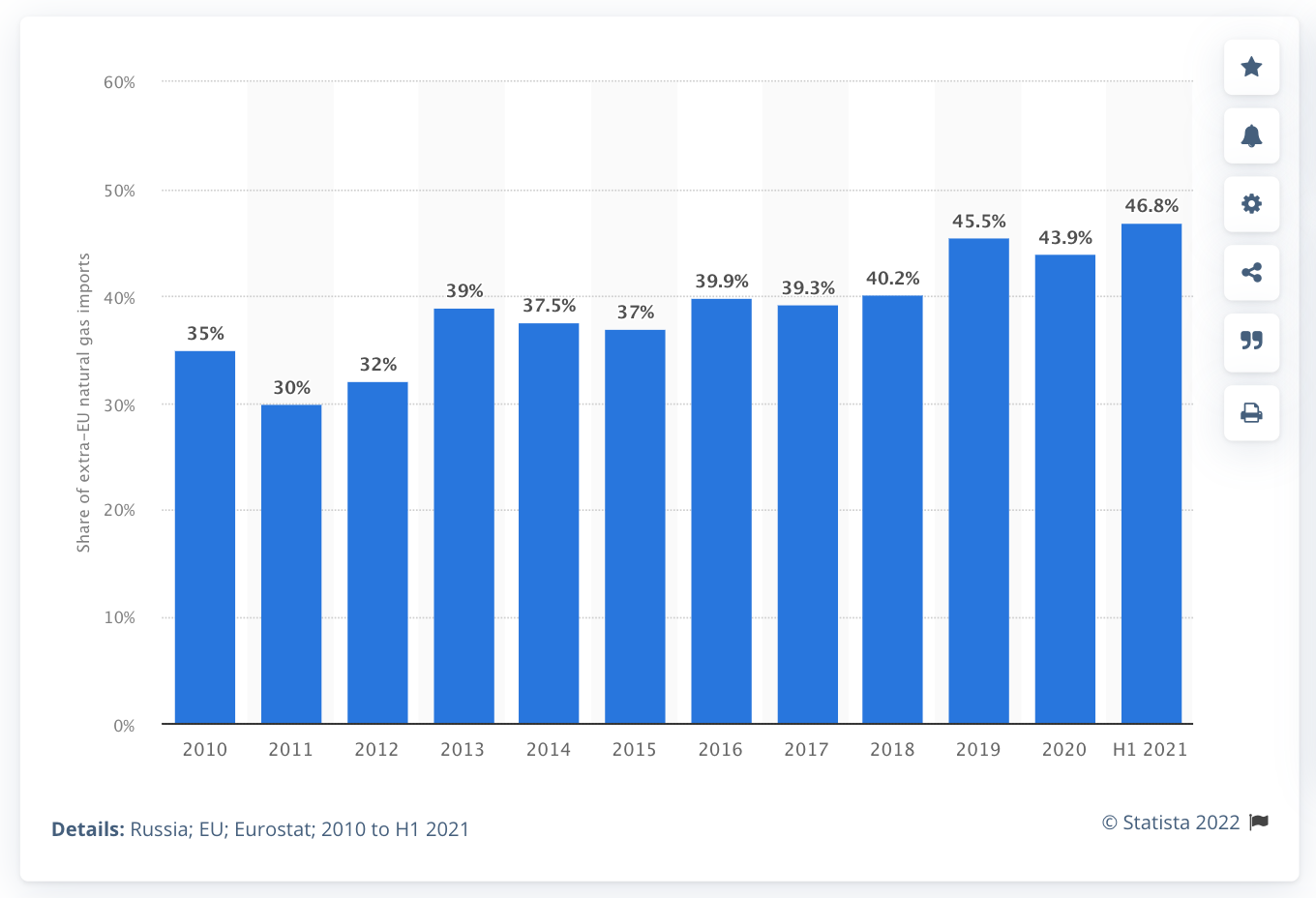
Everywhere you turn, these connections are manifesting themselves.
Framing the stand off between Russia and the West, is China.
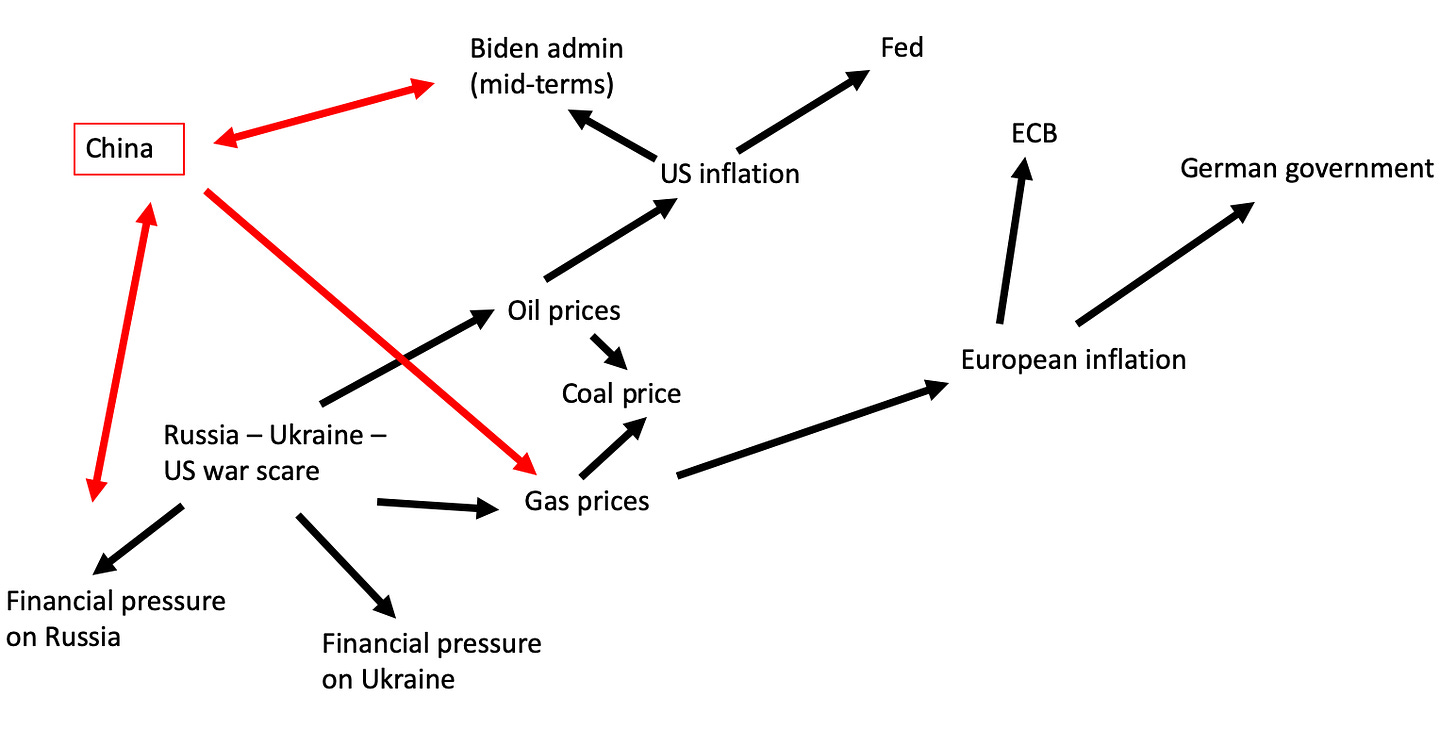
Since the Ukraine crisis of 2014 Russia has developed a new and far closer relationship with Beijing. It will be a striking twist in Eurasian history if it is two crises in Ukraine (2013/4 and 2021/2) that drive Russia definitively into the arms of China.
Right now that same triangle – US-Russia-China – is manifesting itself in Europe in intense politicking around Lithuania!
After @noahbarkin reported that Berlin believed that Lithuania was an eager tool of US policy v. China (with eye to Russia) gmfus.org/news/watching-…
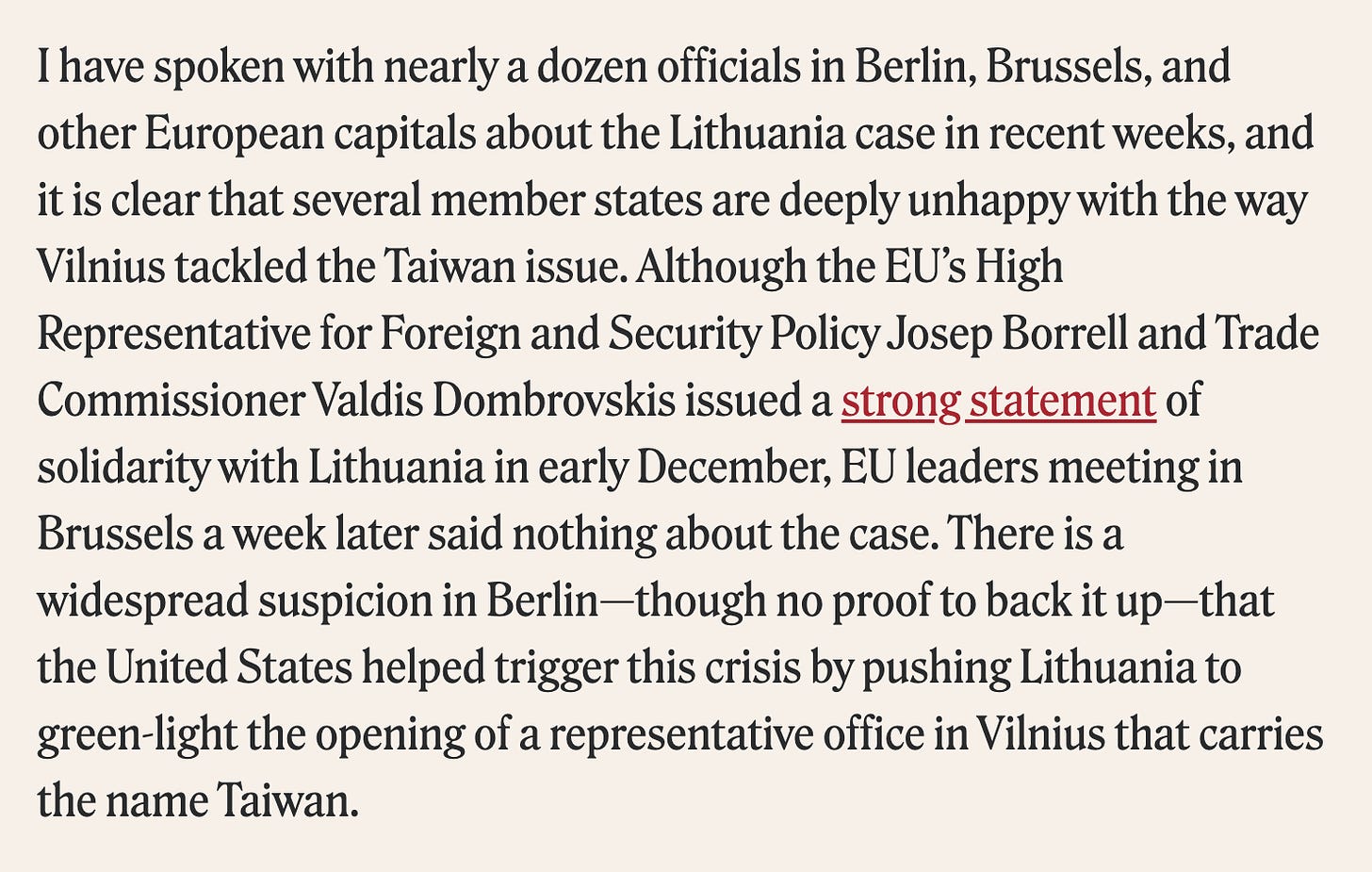
Now the well-connected @Dimi of the FT, reports that the US is using its diplomatic sway to soften Lithuanian stance!
File that under: “Things that make one go “Hmmmm…”
Certainly, China gains leverage as tension between the West and Russia mounts. At the same time it was China’s surging demand that triggered the explosive “pop” in global gas markets that has put so much pressure on governments in Europe and places them in Putin’s hands.
China also, however, poses another risk, by way of the unpredictable spread of Omicron. This could inflict further disruption on global supply chains transmitting a further supply-side shock and inflationary impulse directly to the US and Europe. This further expands our Krisenbild.
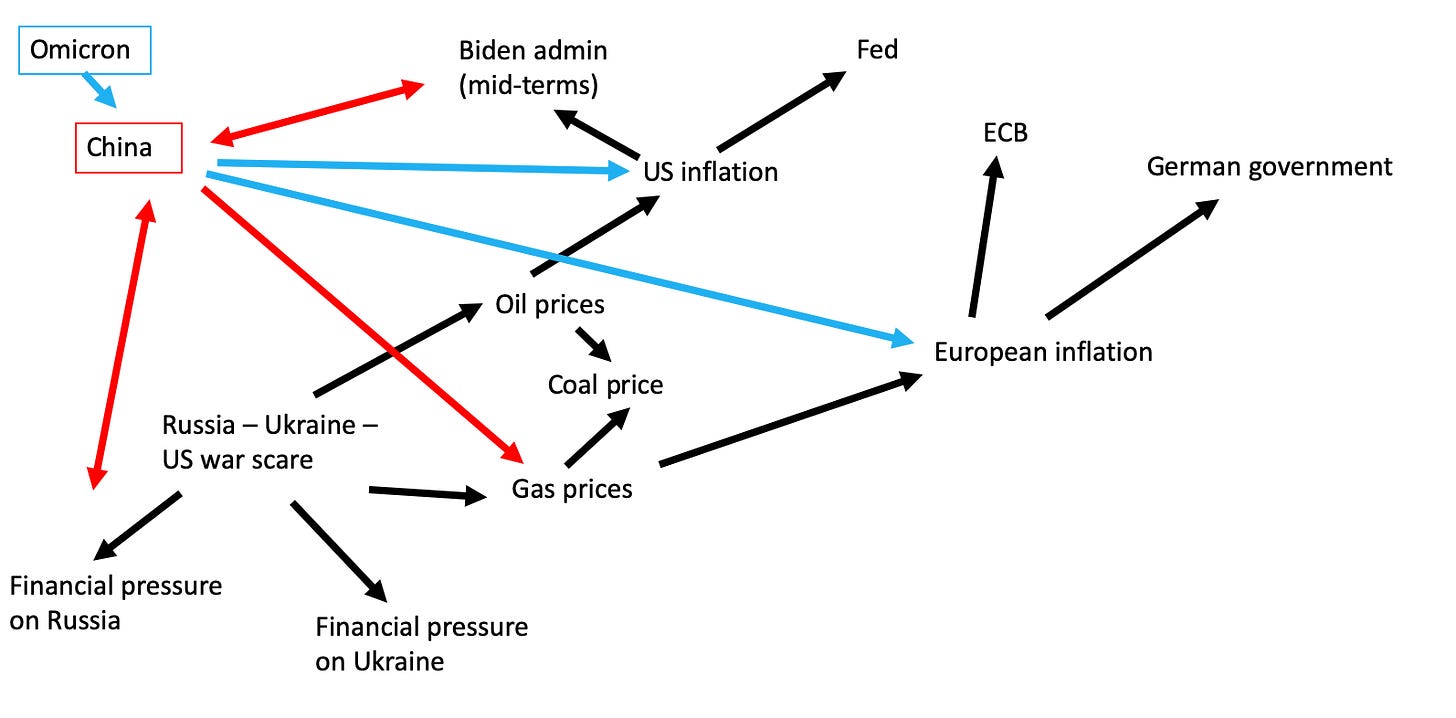
Little wonder perhaps that the US authorities were said yesterday to be closely following the unfolding Omicron threat in China. At least in this respect we appear to have learned the lessons of January and February 2020. What happens in China doesn’t stay in China!

And, all of this, dizzyingly, is unfolding only weeks after the global climate conference in Glasgow produced unprecedented commitments to net zero – including a distinct shift in position from Russia – fanning the (over)excited talk of “greenflation”.

To be clear, I think we should regard many of these linkages with a fair degree of skepticism, notably the talk of greenflation. More on this in a future Chartbook. But these connections are “out there” in the conversation. As discourse they matter, whether we can quantify or measure their effects or not.
A map like this may be useful for taking stock and surveying the variety of linkages that are currently being invoked, the range of connections that are in play.
Many of the connections, indeed the war scare itself, hover between the actual and the hypothetical. It is the threat of an, as yet, hypothetical war that is causing all the commotion. But that commotion is very real. War scares are real.
The German philosopher-historian Reinhart Koselleck spoke of the gap in modernity between the space of experience and the “horizon of expectation”. Given our present mood, talk of a horizon of expectation feels like a rather pastoral image. What these Krisenbilder sketch is more like a mind map of our fears.
But, with Koselleck, let us hope that these fears do remain on the horizon.
Certainly, let us hope that we are not caught up by the shadows of the past that haunt this ominous interview with one of Russia’s most heavy-hitting conservatives.
Karaganov often speaks what Russia's most conservative foreign policy minds think (military but not only)
— Anton Barbashin (@ABarbashin) January 19, 2022
Few gems from his recent interview:
1/12
****
I love putting out Chartbook. I am particularly pleased that it goes out for free to thousands of subscribers around the world. But, writing the newsletter takes a lot of work. If you would like to support the project, sign up for one of the subscription options here.
